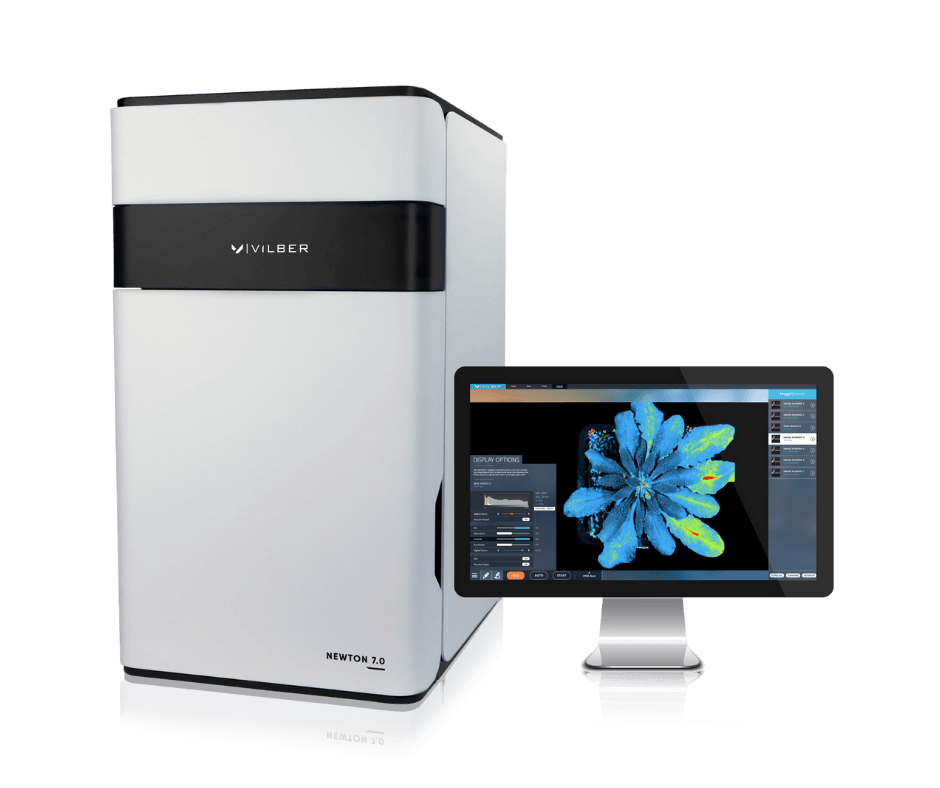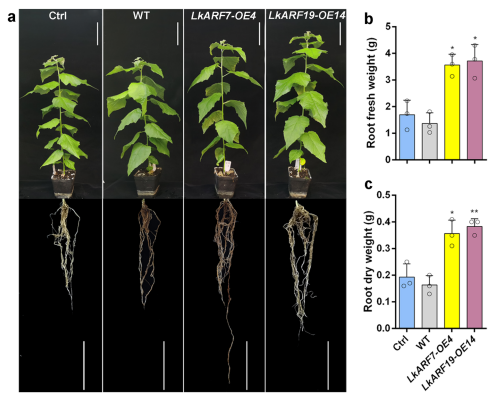Article Review:
Recent Developments in Plant Research – Utilizing Advanced Techniques Such as Bioluminescence and Fluorescence Imaging
System Used:
Newton BIO

Plant research is, and has traditionally been, incredibly diverse; encompassing a broad range of topics that are crucial for understanding plant biology, improving agricultural productivity, and managing the environment. Botany encompasses the study of plant structure, growth and development, reproduction, metabolism, diseases, etc. While plant biology may be used interchangeably with botany, it often denotes a more modern approach to the study of plants which encompasses molecular biology, genetics, biochemistry, and ecology.
Plant researchers have employed a variety of techniques over the years, ranging from simple observation to more advanced techniques. These techniques include morphological analysis, taxonomy, and classification, along with physiological and ecological studies which may or may not involve cross-breading and hybridization techniques to selectively breed varieties with desirable traits. More advanced techniques have included microscopic analysis of plants and their tissues, all the way to chromatography and spectrophotometry to determine chemical analysis of plant pigments, metabolites, and other constituents.
However, as basic science has advanced, so have these techniques been applied to plant research. With the advent of genetic engineering researchers have completed genome sequencing, and genetic manipulations which are commonplace now in plant research. Modern plant research has expanded quite dramatically in recent decades to include:
- Understanding of plant genomics to help improve disease resistance, drought tolerance, as well as nutritional content.
- Enhancement of photosynthesis, aiding in the development of high-yield, and more sustainable crops
- Understanding and enhancing plant hormones, again to help manipulate plant growth and reactions to stress
- Developing plant breeding techniques to allow for the development and enhancement of favorable traits, or otherwise manipulating the genome to help in the production of specific compounds
- Studying plant-microbe interactions to better understand how bacteria, fungi, and other microorganisms can be beneficial to plants, assisting in absorption of nutrients and providing resistance to disease
As imaging has been evolving in the clinic and preclinical research worlds, so have these techniques been applied in plant research in more recent years. This includes both bioluminescence and fluorescence imaging. These techniques have been used to monitor gene expression, localize specific proteins, and investigate signaling pathways in living tissues over the course of the growth and development cycles.
More specifically, one of the most common applications, as you will see below, is the visualization of gene expression and protein localization within living plants. In this situation the gene or protein of interest are tagged with either a fluorescent or bioluminescent marker, allowing the researcher to image the dynamic expression of these genes, and the localization of the proteins, again all while the plant is still alive and continuing to grow.
Just as in the preclinical research world, plant researchers have developed fluorescent biosensors as well, allowing for specific biological and molecular events to be imaged in real-time. Multiplex imaging of different fluorescent and/or bioluminescent markers is also possible with a variety of plant models.
Finally, imaging can be used to study the interactions between plants and their pathogens. Pathogens can be engineered to produce bioluminescent or fluorescent markers, allowing researchers to track the infection process in real-time in living plants.
In a recent publication, Tao et al. were examining the role of various genes in adventitious root (AR) formation, which is crucial to the asexual propagation of woody species such as the Japanese Larch. In this case Larix kaempferi, the Japanese Larch, is of significant importance and finding a way to enhance growth or speed growth would have a considerable economic benefit.
This study focused on the role of auxin response factors (ARFs) in AR formation. ARFs are transcription factors in the auxin signaling pathway that modulate the expression of early auxin-responsive genes. The team identified 14 L. kaempferi ARFs (LkARFs), with LkARF7 and LkARF19 found to bind to the promoter of Larix kaempferi BABY BOOM 1 (LkBBM1), a gene known to regulate AR formation, enhancing its transcription.
BABY BOOM (BBM) genes, part of the APETALA2/ETHYLENE RESPONSE FACTOR (AP2/ERF) family, are major regulators of plant cell totipotency. They promote cell proliferation and regeneration during embryogenesis. BBM is also involved in root primordium formation via the auxin signaling pathway. Previous studies by this group showed that overexpression of LkBBM1 or LkBBM2 in poplar led to an increase in ARs.
This study further explored the relationship between ARFs and BBM1 and found that the auxin-induced expression of LkARF7 and LkARF19 enhances the transcription of LkBBM1, suggesting a potential relationship between ARFs and BBM in regulating AR formation.
They also investigated the role of DEAD-box RNA Helicases (DDXs or RHs) in auxin-related plant development. Finding that LkARF19 interacts with the DEAD-box ATP-dependent RNA helicase 53-like protein to form a heterodimer, which regulates AR formation.
In conclusion, Tao et al. discovered that naphthalene acetic acid (NAA) treatment enhances the expression of LkARF7 and LkARF19, promoting AR formation by activating LkBBM1 transcription and forming heterodimers with LkRH53. These findings provide deeper insights into the regulatory mechanisms of AR formation.
Throughout this study Tao et al. utilized a variety of techniques, including a host of molecular biology techniques to examine and map out gene expression levels, as well as morphological analysis of the plants as they grew. Additionally, this group performed bioluminescence imaging with the Newton 7.0 Bio Plant Imaging System in their living plants. They utilized a dual-luciferase assay to detect the expression of LkBBM1 when co-transformed with either 3SS::LkARF7 or 3SS::LkARF19.
This paper elegantly shows the utilization of many advanced scientific techniques in the area of plant research. These, as well as so many other, plant researchers are following in the footsteps of preclinical researchers to better understand that a multi-modal, or multi-pronged, approach to their work will better help them to elucidate molecular and biological pathways. Advancements made today and in the future will be vitally important not only to propagation of woody species, as this group was investigating, but also in nutrition, biofuels, disease resistance, and so many other aspects of plant growth and development.

